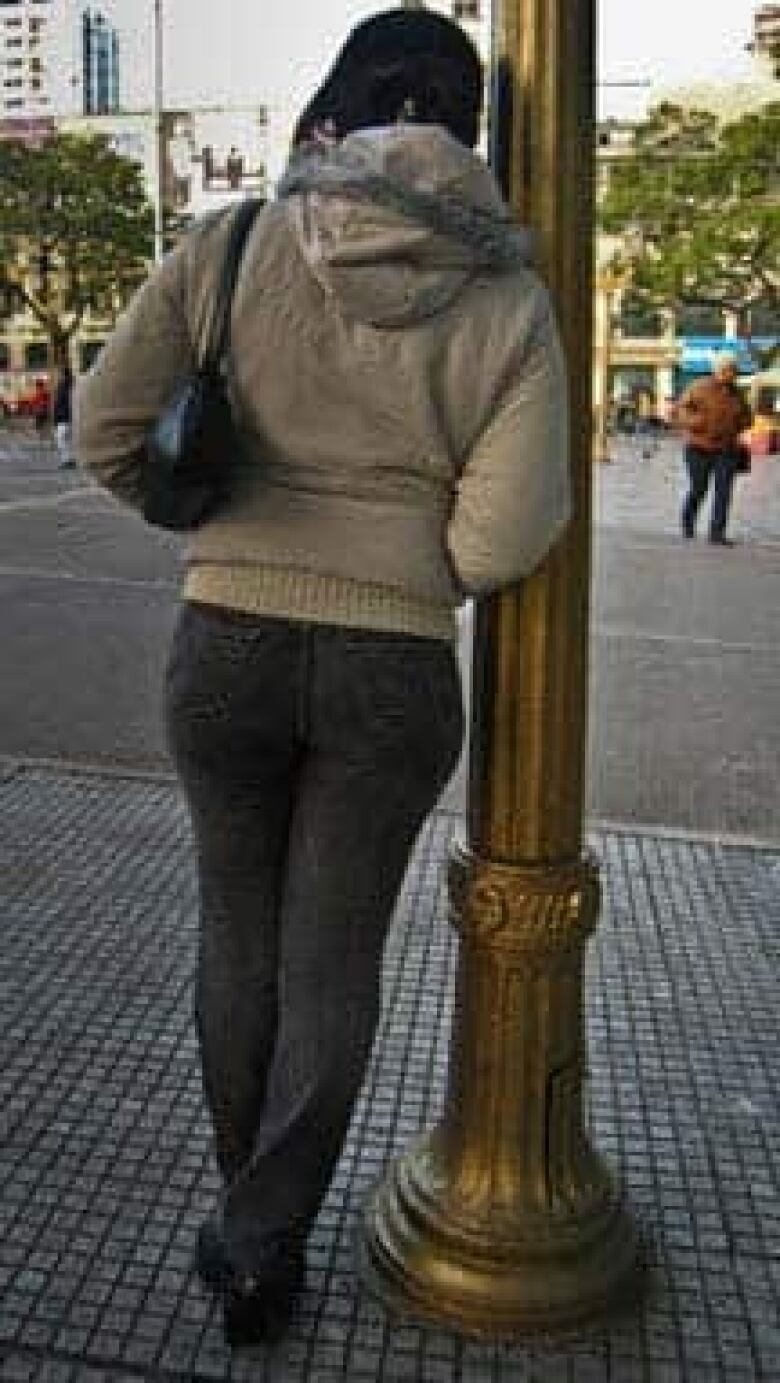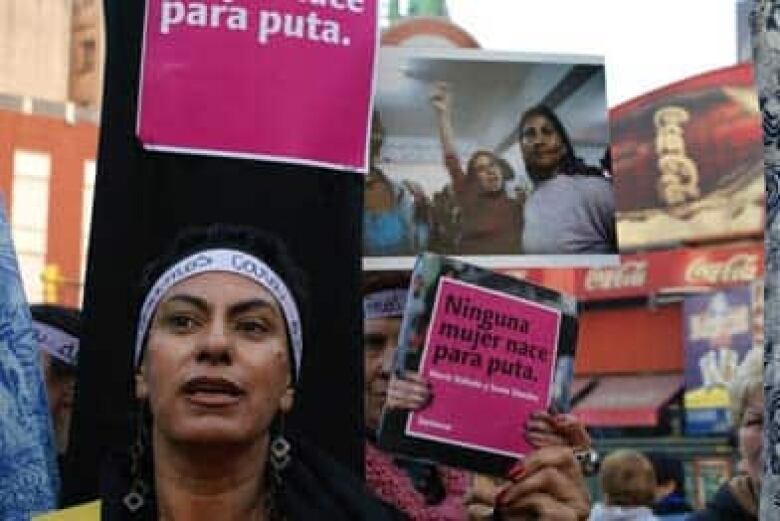The globalization of sex
Walking across "Prostitute Plaza" in Buenos Aires, it is easy to spot the working girls. Leaning on the lamppost, perching on the concrete benches, hanging around.
Most of them don't look like your stereotypical hooker. There is no cleavage, micro-minis or stilettos. But they all offer the same services. Five pesos ($1.50), more without a condom.
Sonia Sanchez, now 44,worked the streets for six years when she was in her 20s.

She came to the capital from one of Argentina's poorer provinces back in the mid-1980s, as many of today's prostitutes still do.
But a quick glance around the plaza as well as through a recent UN report and it's apparent there has been a real change in the supply chain.
According to the UN'sInternational Organization for Migration, young women from the Dominican Republic began arriving to Argentina in unprecedented numbers in the 1990s. And they're still coming.
In fact, so many of them were ending up in Buenos Aires that the Dominican government official in charge of human trafficking paid a visit.
He came and went. No investigation. No arrests.
Yet it's clear these young women and girls are being brought in to feed the prostitution trade. In a country of mostly fair skinned residents, they are considered exotic.
"Suddenly there were Dominicans on every street, on every corner," says Sanchez. The local girls hated the new arrivals. The competition was fierce. The prices dropped.
'Fresh meat'
Sanchez, who now works with a group that helps current and former prostitutes, calls the Dominican hookers "imports" for a sex trade that needs "fresh meat" on a regular basis.
As soon as the women are brought into Argentina, their passports and return tickets are confiscated by their recruiters. Once they hit the streets, they're preyed upon even by local police who threaten to turn them over to immigration if they don't provide sex or cash.
The Dominicans in Buenos Aires's Prostitute Plaza are just one example of a global sex trade that has only grown bigger and more complex over the last 20 years, says Canadian sociologist Richard Poulin, from the University of Ottawa.
As borders have come down, human traffickers have expanded their networks. Poulin estimates that between one and four million women and children are transported every year in these networks, most of them for the sex industry.
He calls it the "feminization of migration."
Complicit
As Poulin sees it, countries that supply the women are complicit in this trade because women who leave will send much of the money they earn to their families back home.
At the same time, the countries on the receiving end look the other way because these foreign females often feed a booming and profitable sex tourism industry.
All of this contributes to the degradation of women, Poulin says. "They are being treated as merchandise for the sex industry. They are new and raw resources."

According to many experts in this field, the illegal trafficking in humans, drugs and weapons accounts for a whopping 15 per cent of world commerce.
Of these three items, human smuggling brings in far more cash.
It's simple math. Drugs and guns can only be sold once. Women and girls can be sold again and again.
Also, human cargo comes cheap. In many cases, smugglers don't even have to pay for the women and children. Smooth talking recruiters simply entice poor females from their homes with promises of a better life and more money.
Often the smuggled females end up paying their own fare and working off the cost of their transport by selling their bodies.
Underage
Prostitutes hit their peak earning potential by the time they're 25, many people feel. Which is one reason why recruiters are going after younger and younger girls.
Poulin says the $100-billion pornography industry is fuelling the appetite for children as well. Teenage girls now make up the biggest slice of viewable porn.
On the streets of Buenos Aires, underage girls are openly working as prostitutes. Social worker Miguel Sorbello estimates there are at least 600 boys and girls being sexually exploited.
The CBC's Connie Watsonspeaks with Miguel Sorbelloabout his project. (Audio runs 1:38)
About a year ago, he convinced the city government to pay for a pilot project. He started off with a group of four social workers and psychologists.
In a few weeks, he'll have a team of 45. The majority of them are former prostitutes. His latest hires are five transvestites.
Sorbello's hope is that the ex-hookers can reach the child prostitutes who are still working and help them escape the network of pimps and traffickers who move them around every 15 to 30 days. "They know how these kids will end up," he says.
Sorbello says most of the children on the streets are Argentinian, trafficked from the countryside or poor areas of the city. He can't be sure about the ones who are being exploited behind closed doors, in brothels and private clubs.
In all, Sorbello estimates there are as many as 2,000 children in the Argentine sex trade. He won't use the terms "working" or "prostitutes" to describe their activity. "What they're being subjected to is exploitation."
These children aren't working, he says. They are being taken advantage of for profit.
Enough laws
He and his group have accused some police officers of being complicit in the child sex trade. But he doesn't want to discuss this with a foreign reporter because he's been getting threatening phone calls and he is worried for his family's safety.
"When you start unravelling this network, sometimes you say 'Okay, do we keep going or stop here?' Because pursuing people with power you could find out things you really don't want to know."
It seems the Dominican and Argentinian governments don't want to know either. Despite the large wave of immigration from the Dominican Republic the vast majority of them young women neither country has launched an investigation into who's bringing these women here and who is in charge of them once they arrive.
Argentina, like many countries, has a new law on its books to fight human trafficking, which keeps it off the U.S. list of nations "Trafficking in Persons Report," one of the most comprehensive reports of its kind.
But Poulin, the Ottawa sociologist, says it's easy for countries to pass laws and make promises and then do nothing.
And Sonia Sanchez, the former prostitute, says criminal laws aren't the answer in any case.
"I don't want more laws. Enough laws," she says. "I want something that gives me support and strengthens me as a woman.
"There isn't one law or one program to help you escape from that life. Recruiters attract women who are poor and uneducated. They don't need to beat you to make you vulnerable. Poverty does that. The whore is the base that sustains this entire multibillion-dollar system. She enriches a lot of people, yet she often dies an indigent without a name."












_(720p).jpg)


 OFFICIAL HD MUSIC VIDEO.jpg)
.jpg)



























































































